ENGAGEMENT RESOURCES
The use of resources within your practice allows one to create a fun, engaing and interactive environment whereby young people can learn through what is termed experiential learning. This is that we use what ever comes to hand to draw out a variety of learning opportunities and experiences, hence we are always teaching. Below are a variety of resources that have proved to be highly effective in engaging and teaching young people about themselves and their capabilities.

RUBIK'S CUBE
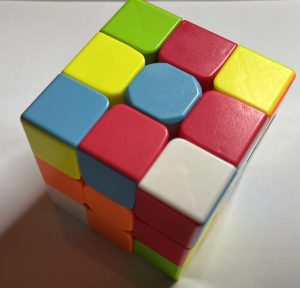
The Rubik's cube is used to illustrate to young people the art of deliberate practice and high performance achievement.
FIDGET TOYS

A variety of these toys exist on the market and are ideal for calming young people with ADHD, or who exhibit nervous tension in 1 to 1 sessions.
ENGAGEMENT PUZZLES/TEASERS

ROPE PUZZLE
A tool of engagement such as a rope puzzle can be utilised as a time filler and an insight into the mind of the young person you are working with. aim: to separate the puzzle into two parts without breaking the wood, or cutting the string. When the young person attempts to solve this puzzle they will give away clues as to their belief in their own ability to solve the proble. I.e Is it possible? this is too hard, Can you do it for me? The type of self talk used by a young person can also be used as a point for discussion.
SUPLEMENTARY PUZZLES

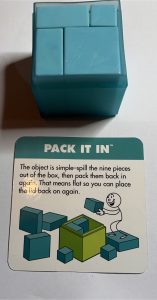
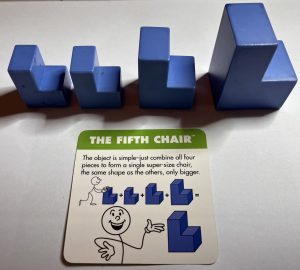



PLAYING CARD GAMES

PIGGY WHISTLE: (Small group, or 1 -2 -1).
Played in the same way as you play snap. Cards are placed atop of the preceding card until a letter or number match. However instead of saying ‘SNAP’ when you get matching numbers or letters, to claim the cards one must place their hand over the cards, call out ‘PIGGY WHISTLE’ and then ‘WHISTLE’ to claim the cards.
POLITE PARTY: (Time 10 minutes: Group work warm up).
Each person is given four cards from a shuffled deck and they then move around the room asking questions to people who may have the cards they need (the object being to get 4 of a kind). If the respondent to your question says ‘YES’ , ‘NO’ , ‘SHAKES’ OR ‘NODS’ their head you can claim a card you need from that person, you then move on to the next person in the room to try and get your 4 of a kind.
TOWERS : (Time 10 minutes: Group work warm up):
Split the young people into small groups of 2 or 3 , give them at least 20 cards . the object is to build the tallest tower they can in the time allotted. They should be allowed to bend (but not tear the cards)
PAIRS:
Ensure you have 20 cards each card having a number , or letter that matches within the 20. Shuffle the cards and place them face down randomly on the table.. The object is to test memory. Take turns to turn over 2 cards. If they match you take them out and collect them and have another go. If they do not match, turn them back over in the same place and the next player repeats the process.
DISCUSSION CARDS

Create a series of discussion cards similar to those that are detailed above. these are great for impromtu discussions and really tend to explore a young persons moral standing, based upon the answers that they put forwards.
PRACTICAL PROBLEM SOLVING

A series of sequential problem solving cards that support young people in the art of problem solving and also enable them to find solutions to their own problems.
JENGA TOWER

This tool can be used to play the traditional Jenga activity, or alternatively it can be used to develop awareness of the pros and cons of competition and cooperation.
MY SUCCESS
3 rounds are played and can be played by up to 4 people. The object of the activity is to amass the largest amount of points. Each person places a brick on top of the previously laid brick.
Round 1: The person who gets the points is the person who collapses the tower (when placing a brick on top of the last laid brick). The points are the amount of bricks in the tower when it collapsed.
Round 2: The person who collapses the tower (when placing a brick on top of the last laid brick gives the points to the last person who succesfully laid a brick on the tower. The points are the amount of bricks in the tower when it collapsed.
Round 3: Is a return to the first round structure. The person who gets the points is the person who collapses the tower (when placing a brick on top of the last laid brick). The points are the amount of bricks in the tower when it collapsed.
Discussion points can centre around which is best: competition or cooperation na d how participants reacted during the various rounds.
FEELINGS AND EMOTIONS RESOURCES:
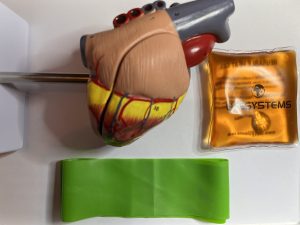
Fitness band= use to illustrate that muscles can be tight (tension), loose (relaxed) or shaky (scared or cold). Get the student to illustrate using the resource their muscle state.
Heat pad= when experiencing anger there will be a notable rise in body temperature. Use this resource to determine whether the student is colder, normal or hotter than normal.
Heart Model = to illustrate to the student whether their heart is racing, thumping out of the chest, or calm and resting.
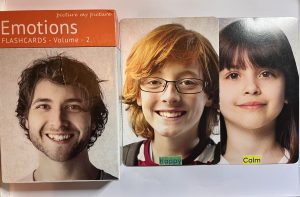
Feelings and emotions cards = Are a great resourrse that allows ther young person to identify and name the emotions thaey are experienceing.
When we let our feelings have a say, they tend to dissipate.
LEGO COMMUNICATION
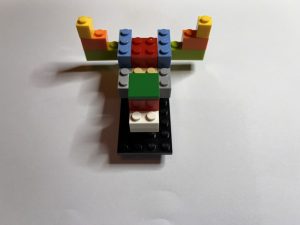
A great way to develop and improve a young persons communication skills.
Ensure you have two identical packs of lego pieces.
Stage 1: You build something using the lego pieces out of site of the young person, then using instructions only get the young person to replicate what you have built.
Stage 2: The young person then builds a structure and gives out instructions to you to allow you to replicate what has been built.
Good discussion points: Did you achieve your aim? How clear and concise where your instructions? What would you do differently next time?
